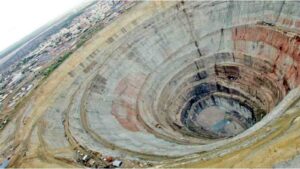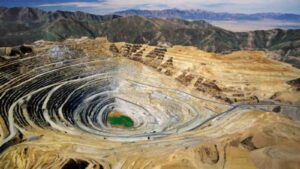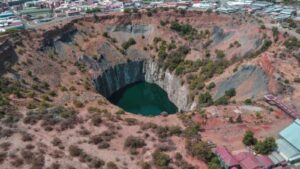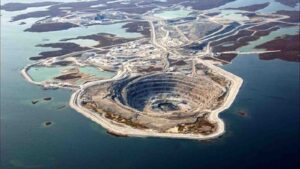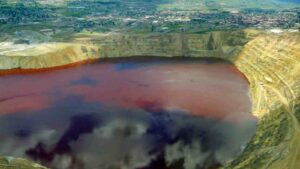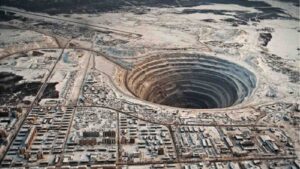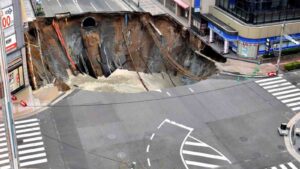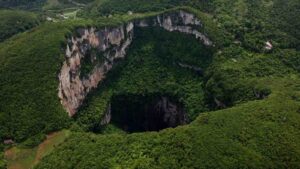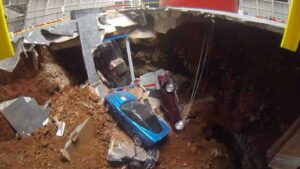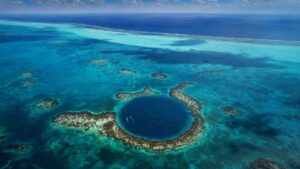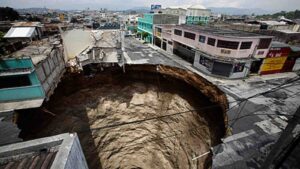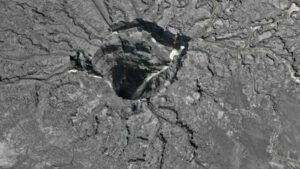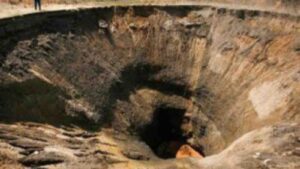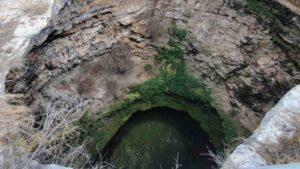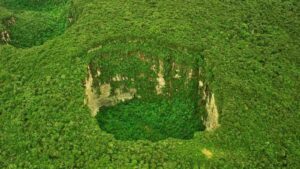Largest Holes Swallowing the Earth
Summary
Top 20 Largest Holes Swallowing the Earth. When the earth opens up, the result is scary! Our mother earth has some “angry and crazy” features of its own. Planet holes are one of them. Some are natural, and others are […]
Top 20 Largest Holes Swallowing the Earth. When the earth opens up, the result is scary! Our mother earth has some “angry and crazy” features of its own. Planet holes are one of them. Some are natural, and others are man-made. Sinkholes can form on land and in the ocean as well. When they are formed on land, they can change the general topography of the area and divert streams of underground water. If they form suddenly in areas with a heavy population, they can cause a lot of damage to human life and property. Sinkholes can be anywhere from a few feet wide and deep to 2,000 feet in diameter and depth. Here is the list of some of the sinkholes, both man-made and natural.
Video: Largest Holes Swallowing the Earth
Kola Superdeep Borehole, Russia
Don’t mind the 9-inch diameter. Instead, focus on the Kola Superdeep Borehole’s unmatched 7.5-mile depth. Started in 1970 by Russian scientists on the Kola Peninsula of Russia, it ultimately became the deepest hole in the world—deeper than even the deepest part of the ocean—after about 20 years of digging and experimentation. The 356 Fahrenheit temperature at that depth, however, made it impossible for tools to keep going. The site has been abandoned since 2008, and the hole bolted shut so nothing can get in.
The Bingham Canyon Mine, Utah
Over 100 years old, the world’s largest copper mine includes a 2.5-mile-wide pit in the Oquirrh Mountains southwest of Salt Lake City, Utah. Considered the largest man-made excavation, the mine dips nearly three-quarters of a mile down and covers 1,900 acres. First started in 1906, the mine is still open, but that hasn’t kept it from being named a National Historic Landmark with a visitor center for folks who want to come and gawk.
Video: Largest Holes Swallowing the Earth
The Kimberley Diamond Mine, Africa
Located in Africa and known as one of the largest hand-made holes that swallows the earth. “The Big Hole” actually started as a bit of a hill. With more than 50,000 miners pick-axing their way into the soil starting in 1866, the Kimberley Diamond Mine sank more than 700 feet and expanded to over 1,500 feet in width by 1914. The amazing fact is that more than 6,000 pounds of diamonds were pulled from what is still, understandably, a tourist destination.
Diavik Diamond Mine, Canada
One of the newer holes on the list, the Diavik Diamond Mine opened in 2003 and has reached deeper than 600 feet in the Canadian Arctic. Located on the East Island in Lac de Gras northeast of Yellowknife, the mine is accessible only by plane—there’s a gravel runway big enough for a Boeing 737—and an ice road. And that’s only if the weather is good enough. The mine yields 3,300 pounds of diamonds annually amidst the ice.
The Berkeley Pit, Montana
Opening in 1955 as a way to mine for copper in Butte, Montana, the Berkeley Pit grew to a depth of 1,700 feet before it was closed down in 1982. Since that time, the pit has filled with over 900 feet worth of groundwater and rainwater. Combined with the heavy metals and chemicals of the prior mining operation, the water has turned highly acidic, and measures have been taken to keep birds out of the water ever since a 342-bird flock of snow geese died inside the mile-long, half-mile-wide pit in the 1990s. That’s scary!
Mirny Mine, Russia
There are claims that the winds around Siberia’s Mirny Mine suck unsuspecting helicopters into its 1,700-foot-deep pit swirl, but even with those rumors aside, the diamond mine that began in 1955 remains fully off limits. Deep enough to hold a 150-story skyscraper inside, Stalin’s diamond mine stretches 3,900 feet across and is one of the largest excavated pits in the world. And even though work in the open-pit mine has ceased, Russia still mines underground at the site.
IceCube Neutrino Observatory, Antarctica
Thanks to the University of Wisconsin, the Amundsen-Scott South Pole Station in Antarctica has 86 cables that reach beneath the ice, supporting 60 digital optical modules that relay data from the depths to the surface above. And that surface is a long way away. The modules hang at depths starting at 4,750 feet all the way down to over 8,000 feet. It took seven years to drill holes for the cables, done in the Southern Hemisphere’s summer and with a 25,000-pound hot water hose that melted roughly 200,000 gallons of water per hole.
Fukuoka, Japan
Five lanes of road vanished in the Japanese city of Fukuoka in 2016 as a sinkhole nearly 100 feet wide and 50 feet deep sucked the pavement away and then promptly filled with water. What made this sinkhole most extraordinary was the fact that Japanese officials had the road repaired in a matter of days. But it all may have gone too quickly as more settling of the earth shifted the new roadway a few inches following repairs.
Xiaozhai Tiankeng, China
We know about the world’s largest sinkhole thanks to 1994 China Caves Project mapping, during which it was discovered. Thanks in part to an underground river in the forests of China, this double-nested sinkhole includes a waterfall in its depth of over 2,100 feet. The whole hole is 2,000 feet long and 1,760 feet wide. The upper bowl is over 1,000 feet deep, and the lower bowl drops an additional 1,100 feet.
Dean’s Blue Hole, The Bahamas
Dean’s Blue Hole in The Bahamas gets more fascinating as it goes down. Dropping 663 feet deep—the world’s deepest known blue hole—the circular opening of up to 115 feet in diameter widens to about 330 feet after only a drop of 66 feet. The root cause of Dean’s Blue Hole is still unknown, but scientists think it may have been caused by the erosion of limestone, a chemical reaction spurred on by the meeting and mixing of fresh and salt water.
Read More: Terrifying Snakes That Are Actually Friendly
National Corvette Museum, Kentucky
Eight Corvettes that fell away from the floor of the National Corvette Museum in Kentucky easily turned into some of the most famous vehicles in the museum. In 2014, a 60-foot by 45-foot hole dropped 30 feet deep and grabbed eight Corvettes in the process. Fortunately, the cars were able to be recovered, and the museum now celebrates the sinkhole by displaying those cars unwashed.
Mount Gambier, Australia
Known as the city of craters, Mount Gambier, which is in between Adelaide and Melbourne in southeast Australia, has all manner of water channels, caves, and caverns beneath its residential crust. Perched atop limestone, the city has both volcanic craters and naturally occurring sinkholes that have filled with water. Presently, the Sinkhole is a beautiful sunken garden that offers a perfect setting for visitors to enjoy and spend some time. The sinkhole was made into a garden by James Umpherston in 1886.
The Great Blue Hole, Belize
A beautiful circular diameter of nearly 1,000 feet gives us what is called the Great Blue Hole in Belize, one of the most impressive displays of sinking in the world. At over 400 feet deep, this sinkhole off the coast of Belize has clearer water the deeper you go, giving off visuals of underwater rock formations. This site was made famous by Jacques Cousteau, who declared it one of the top five scuba diving sites in the world. In 1971, he brought his ship, the Calypso, to the hole to chart its depths.
Guangzhou, China
The southern Chinese city of Guangzhou knows sinkholes, but it knows none bigger than one that developed in 2013 near a subway construction site that dropped about 30 feet deep but was about 1,000 square feet across, gobbling up five shops and part of another building. Luckily, nobody was injured in the sinkhole formation.
Guatemala City
Residents of a Guatemala City heard strange rumblings for weeks but weren’t sure what was happening beneath them. Then, in late February 2007, a near-perfect circle of earth dropped some 30 stories almost instantly. It’s amazing how neat the hole is. The scary fact is that two people died and over 1,000 had to be evacuated; the sinkhole resulted from a corroded sewage system deep beneath the surface. Sinkholes are caused by changing geological conditions or by a failure to maintain aging underground pipes and sewage systems, but the common factor in both is usually water. Ground underlain with carbonate bedrock—limestone, for example—is most prone to sinking because the bedrock erodes with repeated exposure to water. The rock corrodes and the sediment swells with water, and eventually everything reaches a critical mass point.
Agrico Gypsum Stack
Florida is plagued by sinkhole erosion, but this disaster in 1994 was one of the most devastating by far. A 15-story sinkhole tore open right beneath an 80-million-ton pile of gypsum. The hazardous soup contaminated 90% of Florida’s drinking water, and cleanup efforts ran into the millions of dollars. The 2 million-cubic-foot hole soon was nicknamed the “Journey to the Center of the Earth,” as if to indicate that it was the newest Disney World attraction.
Qattara Depression
This strangest, sludge-filled quicksand pit is unearthly in its appearance and shocking in its size. The 133-meter-deep sinkhole has been used in battle, and more recently, scientists have attempted to develop a $360 million-dollar project that would harness the Qattara for complete energy independence. The plan would require digging a ditch from the edge of Qattara to the Mediterranean and allowing the sink to slowly fill with water via a tunnel. The almost incomprehensibly vast Qattara hole is 100% natural—the product of fierce winds tearing into the slimy salt beds right down to the water table.
Berezniki
In Soviet Russia, the ground moves you. Berezniki’s sinkhole began in 1986 and just grows worse with each passing year. It’s unstoppable. Currently, it’s over 200m deep, 80m long, and 40m wide. In case you’re thinking, “Berezniki? Who cares?” You should know the earth fact: 10% of the world output of potash comes from this area, and the sinkhole is very close to destroying the mine’s sole rail line.
The Devil’s Sinkhole
Plunging a frightening 400 feet is the cavernous Devil’s Sinkhole in Texas. The area was transferred to the state of Texas in 1985 and opened to the public in 1992. Carved by water erosion, the cavern is home to several million Mexican free-tailed bats that emerge at sunset from April through October. In 1968, the Devil’s Sinkhole was designated as a National Natural Landmark by the National Park Service.
The limestone wonder has a 40-by-60-foot opening, and there is archaeological evidence that the sinkhole was considered sacred by Native Americans. Locals are known to collect arrowheads, stalactites, and other treasures from the sinkhole. Random trivia: a sinkhole may also be referred to as a swallet, cenote, or doline.
Read More: Unbelievable Things Found Underwater
Sarisarinama
The hole of Venezuela is a mysterious and beautiful natural wonder. There are several of these perfectly round basins that are each 350 m in diameter and over 350 m deep. Scientists aren’t sure how these stunning sinkholes originated, but they are awe-inspiring nonetheless. One amazing earth fact is that each hole contains unique ecosystems with many distinct plant and animal species found nowhere else on our planet.
Which sinkhole terrifies you? Don’t go away without writing in our comment section.
